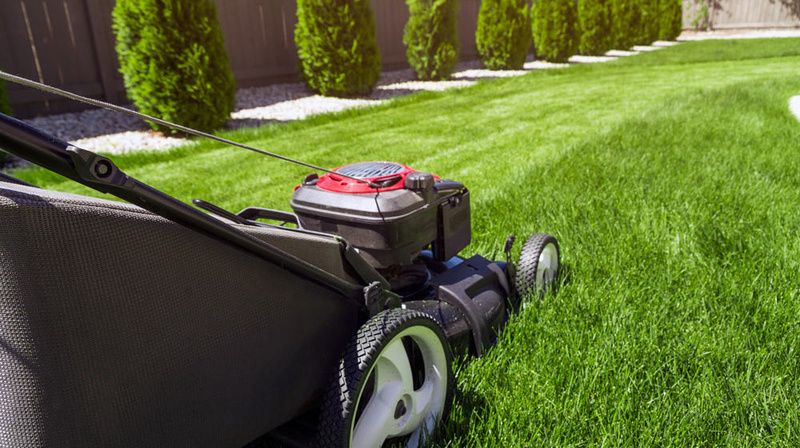
Mowing a Lawn: How High, How Dry?
Yes, there are right ways and wrong ways to mow a lawn. Check out the deets in this blog, where we talk about proper mowing heights, best times of day to mow, and whether you should mulch or bag those lawn clippings.
What difference does the mowing height make for a lawn? Does it matter what time of day the grass gets cut? We tackle these questions, plus a few more, in this blog.
Mowing Height by Grass Type
Mowing height does make a difference when cutting grass. Recommended mowing heights vary by type of turf.
Bahia: 2 – 3”
Bermuda: ½ – 1 ½”
Buffalo: 2 – 3”
Centipede: 1 ½ – 2 ½”
Fine fescue: 1 ½ – 2 ½”
Kentucky Bluegrass: 1 ½ – 2 ½”
Ryegrass: 1 ½ – 2 ½”
St. Augustine: 2 – 4”
Tall fescue: 2 – 3”
Zoysia: ½ – 1 ½”
We encourage setting mowers at the highest height recommended for the type of grass being mowed. Why? Because longer grass blades support and promote deep, strong root systems. Long, robust roots take in water and nutrients better than short, thin roots. When grass is cut too short, the plant directs its resources to growing its blades rather than feeding its root system.
Another benefit of longer grass is that it shades out weeds and keeps the soil cooler.
Best Time of Day for Cutting
Generally, late morning or early evening are the best parts of the day to mow. By late morning, nighttime dew has dried. By early evening, the heat of the day has passed. Mowing when it’s extremely hot stresses grass as well as humans. Grass that is cut when it’s cooler has a chance to recover before the next day’s high heat.
Florida’s summer afternoon rains can put a crimp in this schedule, however. Sometimes you have to mow in the heat of the day in order to get the job done before rains arrive.
To Mulch or To Bag?
Bagging grass clippings adds time to the chore of lawn mowing. In the summer, when mowing is a weekly task, most homeowners look for ways to reduce rather than increase their hours spent doing lawn care.
Mulching clippings is a great alternative to bagging them. Mowers with mulching blades chop cut grass into tiny pieces and spray the pieces back out onto the turf. There the pieces break down and return nutrients to the soil.
Mulching works well on yards that are mowed regularly. It doesn’t work well on grass that is long because the clippings pile up in clumps on the mown turf. If not picked up, the clumps can make grass underneath turn yellow.
A Few Mowing Tips
• Change the cutting direction from one mowing to the next. Cut across the yard one week, lengthwise the next, and diagonal the next (for example).
• Mow only as needed. In Florida, this may be weekly during the summer, every ten days in the fall, and every few weeks in the winter.
• Sharpen mower blades regularly. When cut grass is ragged, that means mower blades are dull. Ragged grass is vulnerable to disease, heat stress, and insect damage.
• Wear glasses while mowing to protect your eyes from rocks or sticks that get launched by the mower.
Thanks to Scotts and Danny Lipford for information used in this article.